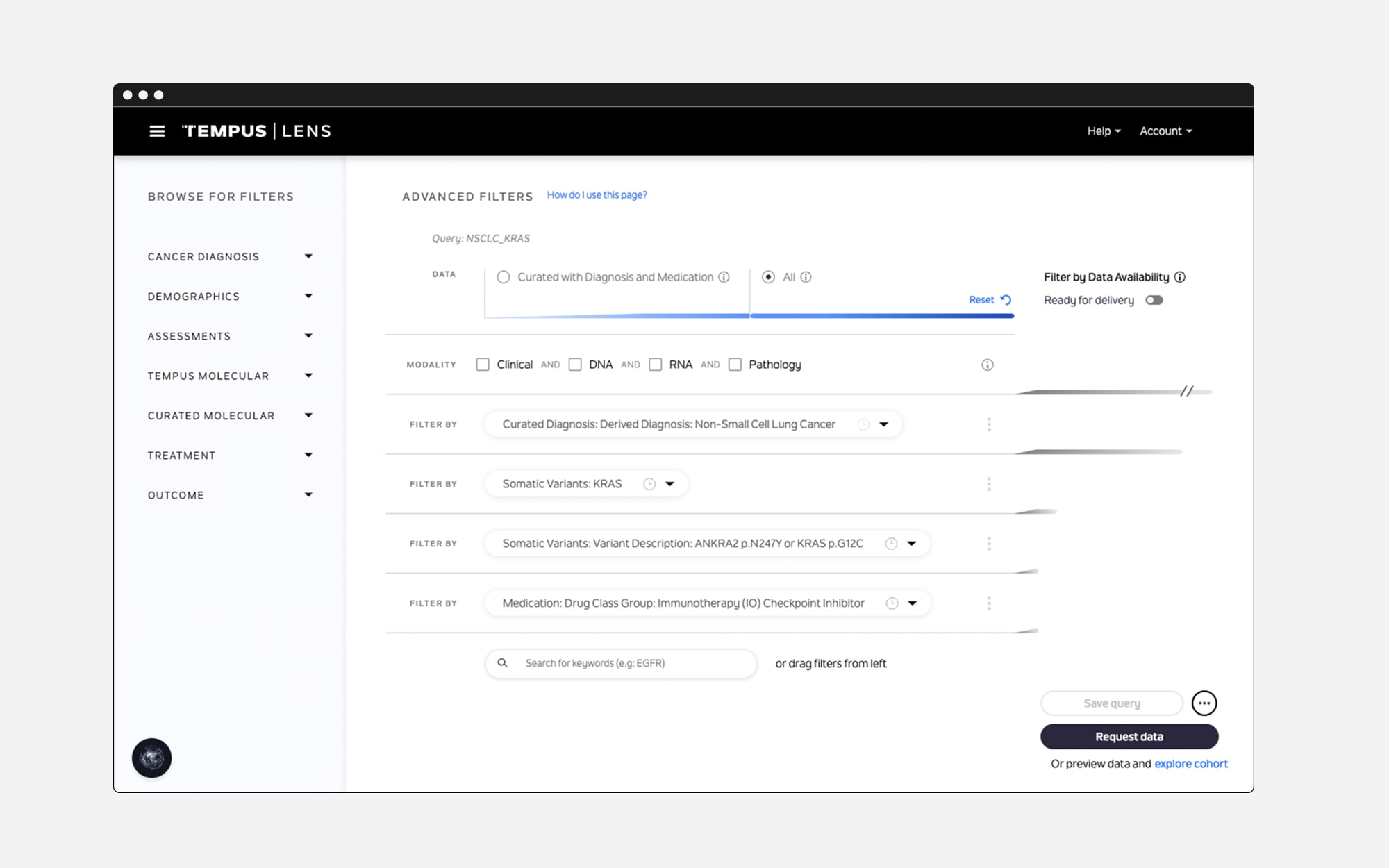Tempus is proud to introduce Tempus OS, a groundbreaking healthcare infrastructure designed to drive innovation in precision medicine. Built with composability, scalability, and security at its core, Tempus OS empowers healthcare professionals, developers, and researchers to create transformative solutions with unprecedented speed and efficiency.
Why Tempus OS Matters
Precision medicine requires the ability to harness and analyze vast amounts of complex data. There are several challenges that hinder progress:
- Difficulty accessing and making sense of unstructured data
- Rigid and fragmented workflows
- Deploying and managing AI models at scale while ensuring compliance with healthcare standards
At Tempus, we set out to address these challenges with a comprehensive, adaptable solution: Tempus OS.
Introducing Tempus OS
Tempus OS is a precision medicine platform designed to empower innovators in healthcare by providing a robust set of modular building blocks. Each component addresses a specific challenge while integrating seamlessly into a larger, unified ecosystem.
Key Components of Tempus OS
- Edge: A connectivity suite to securely manage and share data at a healthcare site.
- Data Products: A centralized data lake for storage, discovery, and governance of clinical data, making data more accessible and actionable.
- Transforms: Automated computational transformations at scale, allowing for more efficient and streamlined data analysis.
- Events: An orchestration service that manages workflows and triggers real-time actions to optimize operational efficiency.
- AI Runtime: An AI model lifecycle management system that facilitates the registration, execution, and monitoring of models, from traditional machine learning to advanced large language models (LLMs).
- Agent Builder: A no-code tool that enables the creation of intelligent agents capable of managing complex workflows using an array of LLMs.
- Patient Query: A powerful tool for searching and deriving insights from unstructured clinical data, leveraging LLMs to extract meaningful information.
- DevX: A developer experience toolkit that simplifies the application lifecycle, from coding to deployment, ensuring developers can focus on innovation.
Across all of these, security, privacy, and compliance is baked into the core.

OS in Action
One application is addressing care gaps in oncology. Oncology care often involves multiple specialists and a wide range of patient-specific data points, leading to potential gaps in care coordination. With Tempus OS, a set of Agents can analyze the patient’s treatment history, clinical notes, and genomic data to identify any gaps or delays in care. For instance, if a critical follow-up or recommended therapy is missed, the system can proactively alert the care team, ensuring timely interventions. This kind of intelligent support not only enhances the quality of oncology care but also helps patients navigate their treatment journey more effectively, reducing the risk of missed opportunities for crucial care.
Another significant use case is trial matching using generative AI and unstructured data. Finding suitable clinical trials for patients can be a daunting and time-consuming task due to the complex eligibility criteria and the vast amount of unstructured patient data. Nurses leverage OS Agents to parse through clinical notes, genetic profiles, and treatment history, automatically matching patients to the most appropriate clinical trials. By integrating patient-specific factors and trial requirements, these Agents can identify opportunities that might otherwise be overlooked, providing patients with cutting-edge treatment options while accelerating research and innovation in oncology.
Both of these scenarios involve ingesting and storing a variety of data through our Edge and into a Data Product, triggering an Event, to execute a set of Agents using Patient Query created through Agent Builder or AI models operating on our AI Runtime and Transforms platform, managed through a console provided through our DevX development toolkit. What traditionally required extensive manual effort and resources, are now possible with unprecedented speed and efficiency.

